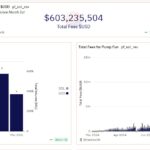In a significant shift for financial markets, two major U.S. exchanges, Nasdaq and the New York Stock Exchange (NYSE), are on the verge of offering round-the-clock trading. This move is fueled by an increasing demand from investors who want the flexibility to buy and sell assets at any time of day. According to Giang Bui, Nasdaq’s head of U.S. Equities & Exchange-Traded Products, this evolution in trading reflects the habits of many traders who are accustomed to the 24/7 nature of cryptocurrency transactions.
“There’s a lot of demand globally for U.S. stocks and people want to trade within the hours that they’re typically awake, and I think a lot of it is because people are used to trading crypto 24/7,” Bui noted at the recent Digital Asset Summit in New York.
As both exchanges seek approval from regulators, the NYSE has already received the go-ahead, while Nasdaq is in discussions to launch similar initiatives. This potential for all-hours trading could enhance market liquidity and increase transaction volumes, as traders can engage without the constraints of traditional time zones. Currently, U.S. exchanges follow a standard trading schedule, opening at 9:30 a.m. ET and closing at 4 p.m. ET.
“We’re hearing it across the board from global broker dealers, clients who they’re servicing… even within the U.S., there’s a number of U.S. brokers that already are offering overnight trading,” Bui added.
This shift not only aligns traditional markets with the evolving landscape of digital finance but also highlights the growing influence of cryptocurrency trading on investor behavior. Nasdaq has even incorporated crypto-related products into its offerings, including the iShares Bitcoin Trust and recently launched Solana futures ETFs, indicating a close connection between traditional and digital assets.

Round-the-Clock Trading in U.S. Financial Markets
Stock and traditional financial asset traders are seeking to trade 24/7, prompting Nasdaq and NYSE to plan round-the-clock trading. Here are the key points regarding this shift:
- Global Demand: There is a substantial global demand for U.S. stocks, with traders wanting to trade during their waking hours.
- Impact of Cryptocurrency: Traders are accustomed to the 24/7 nature of crypto trading, influencing their expectations for traditional markets.
- Approval Processes:
- Nasdaq is engaging with regulators to initiate round-the-clock trading.
- NYSE has already received approval for 24/7 trading operations.
- Increased Market Liquidity: Extended trading hours could enhance market volume and liquidity as it caters to global traders across different time zones.
- Current Trading Hours: Currently, U.S. markets operate from 9:30 a.m. to 4 p.m. ET, limiting trading opportunities.
- Broker Response: Some U.S. brokers have already started offering overnight trading to meet client needs, indicating a shift in trading behavior.
- Innovations in ETFs: Nasdaq is listing innovative products like crypto-related ETFs, responding to evolving investment interests.
“We definitely see that this is where the markets are moving,” said Giang Bui, highlighting the trend towards 24/7 trading.
This shift could significantly impact retail and institutional investors, allowing more flexibility and opportunities to trade, aligning traditional markets with the speed and accessibility that the digital asset space has introduced.
Round-the-Clock Trading: A New Era for U.S. Stock Markets
In a significant shift for traditional financial markets, the Nasdaq and NYSE are gearing up to accommodate the ever-growing demand for 24/7 trading. The implications of this move are far-reaching, as they could reshape the trading landscape for both individual and institutional investors. With the rise of cryptocurrency markets operating around the clock, it’s clear that traders have become accustomed to the convenience of non-stop accessibility. This shift is set to provide distinct competitive advantages while posing certain challenges to existing market dynamics.
Competitive Advantages: The most apparent benefit of round-the-clock trading is the potential for increased market liquidity. By allowing transactions beyond traditional hours, both Nasdaq and NYSE can attract a broader range of participants. Traders who operate in different time zones or those who prefer the flexibility of trading at odd hours will find themselves catered to. This could also lead to heightened trading volumes, ultimately improving price discovery and reducing bid-ask spreads. Furthermore, as more traditional investors pivot toward digital asset classes, these exchanges could enhance their relevance by bridging the gap between conventional and crypto trading.
Competitive Disadvantages: Despite its advantages, the transition to 24/7 trading isn’t without drawbacks. Increased trading hours may lead to heightened volatility, especially during off-peak hours with fewer traders in the market. Additionally, the expanded hours could present operational challenges for brokers and exchanges in terms of staffing and technological infrastructure. There’s also the risk of market manipulation in less liquid hours, where a smaller pool of traders could significantly influence prices without sufficient oversight.
The anticipated round-the-clock trading could be a game-changer for retail investors and day traders who thrive on quick transactions and agile strategies. However, institutional investors might find themselves grappling with adapting their strategies and operations to this new environment. Regulatory bodies will also need to ensure that appropriate safeguards are in place to maintain market integrity despite these changes.
In summary, while this pioneering move by Nasdaq and NYSE holds tremendous potential for transforming trading practices, it is essential for both individual and institutional participants to remain vigilant and adapt to a landscape where market hours are no longer a constraint. Thus, whether this new trend proves to be a boon or a bane will heavily depend on how stakeholders navigate the complexities it introduces.

















